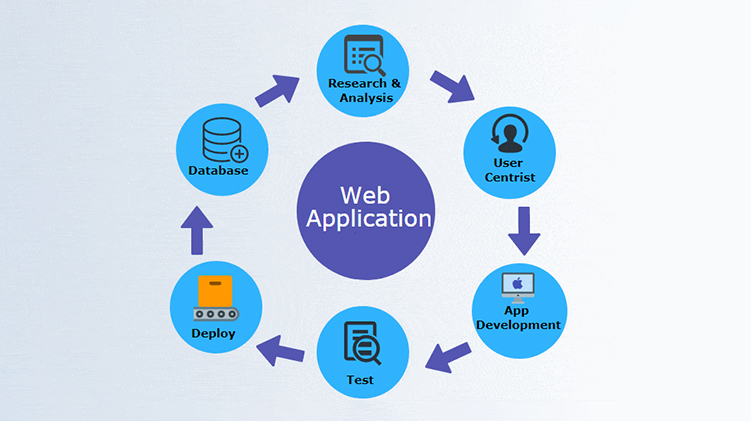

Exploring Web Applications: Types, Development Process, and Benefits
Web applications have become integral components of our online experiences, reshaping how we interact with the internet and conduct business. In this comprehensive guide, we'll embark on a journey to understand what web applications are, explore the various types available, decipher the intricate process of web application development, shed light on the manifold benefits they offer, and underscore their profound significance in the digital realm.
What is a Web Application?
A web application, commonly known as a web app, is a software application hosted on a web server and accessed through a web browser over the internet. Unlike traditional desktop applications, web apps don't require installation and can be accessed from any device with internet connectivity. They typically offer dynamic content, interactive features, and real-time updates, making them ideal for tasks like online shopping, social networking, and collaborative work.
Types of Web Applications
Web applications come in various forms, each catering to specific needs and preferences. Some common types include:
- E-commerce Applications: These platforms facilitate online buying and selling of products or services, providing features like product browsing, shopping cart management, and secure payment processing.
- Social Networking Applications: Platforms like Facebook, Twitter, and LinkedIn enable users to connect, communicate, and share content with others in real-time, fostering social interactions and community engagement.
- Content Management Systems (CMS): CMS platforms such as WordPress, Joomla, and Drupal empower users to create, publish, and manage digital content on websites effortlessly, without the need for coding skills.
- Online Collaboration Tools: Tools like Google Workspace, Microsoft Office 365, and Slack streamline collaboration and communication among teams, allowing for file sharing, project management, and instant messaging.
- Customer Relationship Management (CRM) Systems: CRM systems like Salesforce, HubSpot, and Zoho CRM help businesses manage customer interactions, track sales leads, and automate marketing campaigns to enhance customer relationships and drive sales.
Web Application Development Process
The development of a web application involves several intricate stages, each vital for ensuring its functionality and success. The typical process includes:
- Requirement Analysis: Understanding the client's needs, objectives, and target audience to define the scope and goals of the web application.
- Design: Creating the visual and user interface (UI) design of the web app, focusing on usability, accessibility, and branding to deliver an engaging user experience.
- Development: Writing code, implementing features, and integrating backend and frontend components to build the functional aspects of the web application.
- Testing: Conducting thorough testing to identify and rectify any bugs, errors, or usability issues to ensure the web app performs optimally across different devices and browsers.
- Deployment: Deploying the web application to a production environment, making it accessible to users over the internet, and ensuring its stability, security, and performance.
- Maintenance and Support: Providing ongoing maintenance, updates, and technical support to address issues, implement enhancements, and ensure the smooth operation of the web application.
Benefits of Web Applications
Web applications offer a plethora of benefits for businesses and users alike, including:
- Accessibility: Web applications can be accessed from any device with an internet connection, providing users with flexibility and convenience in accessing services and information.
- Scalability: Web applications can easily scale to accommodate growing user demands and business needs without significant infrastructure changes or disruptions.
- Cost-Effectiveness: Compared to traditional desktop applications, web applications typically require lower upfront costs for development, deployment, and maintenance.
- Cross-Platform Compatibility: Web applications are compatible with multiple operating systems and devices, ensuring seamless access and consistent user experiences across different platforms.
- Real-Time Updates: Web applications can be updated in real-time, allowing for instant deployment of new features, bug fixes, and security patches without requiring users to install updates manually.
Significance of Web Applications
In the contemporary digital landscape, web applications play a pivotal role in driving business growth, enhancing productivity, and improving user experiences. They enable businesses to reach a broader audience, streamline processes, and stay competitive in an increasingly digital marketplace. From e-commerce and online banking to education and healthcare, web applications have transformed the way we work, communicate, and interact online.
Conclusion
In conclusion, web applications represent powerful tools that have revolutionized the digital landscape, offering unparalleled opportunities for businesses and users to connect, collaborate, and innovate. As businesses continue to embrace digital transformation, investing in web application development is essential for staying relevant, driving growth, and unlocking new possibilities in the ever-evolving digital world.